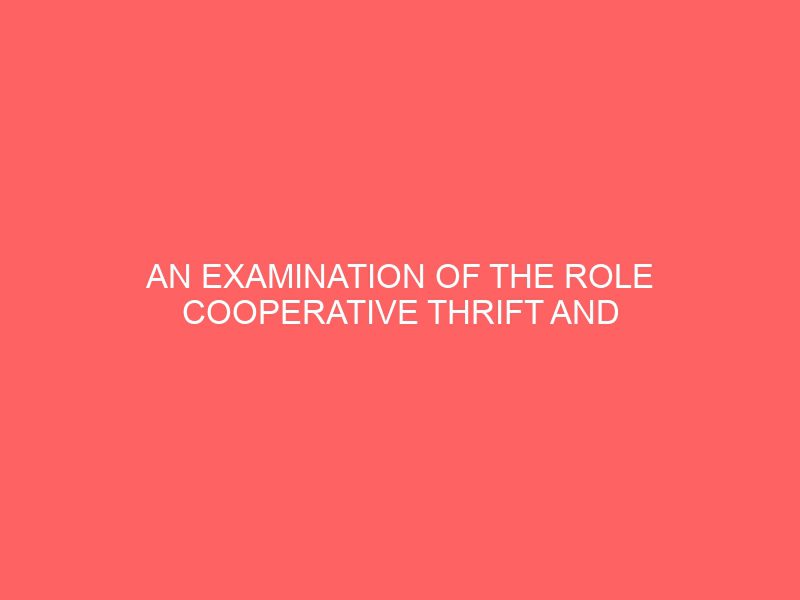Description
CHAPTER ONE
1.0INTRODUCTION
1.1 BACKGROUND OF THE STUDY
In any economy, one or more sections serves the prime movers drilling the rest of the economy. Agriculture until recently has been the prime mover of Nigerias economy. The last fifteen years witnessed successive governments in Nigerias taking several steps to boost agricultural production in the country.
Most notable among these efforts were the National Accelerated Food Production Programme NAFPP which was launched in 1973. Operation feed the nation OFN of 1976 and the Green Revolution Programme GRP that was launched in 1980 IJERE. M. O 1975. Special projects were also embarked upon to enhance agriculture such as Agricultural Development Authorities, River Basin and Rural Development Authorities, to mention just a few. Provision of fertilizer, improved seeding to farmers, mass enlightenment campaigns. Introduction of technology packages were also some of the attempts made to raising agricultural production.
In spite of all these, agricultural production in Nigeria is far from the target. Productivity has declined to the extent that the country had to resort to importing agricultural products including food items, some of which were luthen to known to have been exported. This unsavory situation has led concerned authorities to examine closely the problems confronting higher agricultural productivity. One of the major constraints identified is inadequate capital and credit facilities to the farmers. Others are poor transportation, inadequate flow of funds into agriculture has been identified as a critical factor in decelerating increased food production in Nigeria Adeyeye; 1978.
Making funds available to farmers through agricultural credit facilities is importance because it enables them expand the scope of their operation and adopt new production techniques, also it enable them to develop orderly marketing of their product through the adaptation of new techniques for processing and storage as well as generating high bargaining power associated with greater liquidity.
In order to ameliorate this funding problems being encountered by the financial institution in Nigeria to allocate yearly a certain percentage of the total lending to the agricultural sector, this is was hoped, would afford the farmers the capital and production credit needed to boast agriculture. This attempt at sector allocation failed to achieve the intended objective as trading banks were reluctant to lend to agriculturist because of the high default risk resulting from the uncertainty and risk inherit in agricultural production and marketing.
The farmers were also confronted with the inability to provide the needed collateral securities . The farmers inability to provide the needed collateral securities by banks led to the search for cooperative societies. The group can lend to individual member farmers and outsiders today. There are many cooperative thrift and credit societies and this project hereby examines the impact they have made towards the financing or upliftment of agricultural production in Nigeria.
1.2STATEMENT OF THE PROBLEMS
Cooperative societies was the revolt against exploitation of workers, the die living condition of the urban masses on estimated competition and greed; peoples bad attitudes, hatred and excessive exploitation of man to man. The establishment of cooperative around Enugu was to ender services among their members and nonmembers but revers is now the case, in the sense that almost all the cooperative organization around Enugu is said to have closed down for no good reason. The few surviving cooperative still in business in Enugu state are so unpopular that they have made impact on the economy of Nigeria. It is true that lack of interest in the societies and also two much of egocentric is one of the things that runs the societies down in Enugu state.
1.3OBJECTIVES OF THE STUDY
1. It helps to determine the role of cooperative thrift and credit societies in agricultural financing.
2. To find out how they are functioning.
3.To find out the nature of the society.
4.To make recommendation of how to carry with the activities of the society.
5.It determine whether the society could still be in operation.
6.To promote a sustainable self help financial solution for members that effectively improves their living condition.
7.To promoting saving with members.
8.Extending loans to members at reasonable interest rates.
9.Providing/organizing training to members on how to run the association effectively.
1.4RESEARCH QUESTION
1. How can we minimize the factors that influence cooperative business enterprise through by financing.
2.Can a cooperative borrow loan from her members
3.How does cooperative finance existing business enterprises in Nigeria
4.Does funds helps in cooperative business enterprises in Nigeria
5.Of what important does cooperative thrift and credit society useful to us in Nigeria.
1.5SIGNIFICANCE OF THE STUDY
This study is conducted in other to examine the role of cooperative thrift and credit societies in financing the Agricultural sector of the economy.
At the end of the analysis, the cooperative thrift and credit societies and policy makers could be well informed of the examination of their roles with a view to provide improving certain standard which are carried at increased
food production, capital formation and standard of living.
The banks and financial institutions will take bearing from cooperative banks, hence enlarging their scope and increasing revenue opportunities. The Enugu state government and the nation as a whole will benefit as findings in these studies will be equally used where necessary to improve agricultural finance in other parts of the country. The nation will further benefit from the study in the sense that the recommendations will boost food production, the cross domestic product and improve standard of living. The farmers would as well be enlightened to the credit opportunities available to them.
1.6SCOPE AND LIMITATIONS OF THE STUDY
Though, it is believed that this project research will serve a national purpose, but for easy coordination of facts. This project research will be concentrated on a sample of cooperative societies and farmers in Enugu state.
However, production has not been easy. The research encountered many constraints which tended to have retarded or delayed the work. The nature of the project topic made it possible that data are processed on restrictive basis, this exposed the research to a little hardship, inadequate finance also contributed a problem, to the research.
1.7DEFINITION OFTERMS
The following terms are used in the project and are defined thus:
Cooperative:
This is an association of persons who have voluntarily joined together to achieve a common end, through making equitable contributions to the capital required and accepting a fair share of the risks and benefits of the undertaking in which the members actively participates.
Agriculture: This is an overall planning, management and control of land, live stocks, wild life and crops with an aim to increasing food productions, raw materials for industries, research and employment.Rural:
This is the opposite of urban of a town where life is usually sustained through farming.
REFERENCES
1. IJERE, M.O. 1975, first step in cooperative Organization, Enugu Government Printer P. 37.
2. ADYEYE S.O. 1978, The Cooperative Movement in Nigeria. Gottingon Publishers P. 58.








Reviews
There are no reviews yet.